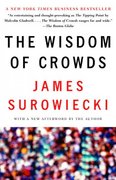Question
Question 4- A. During commuting hours, drive time listeners are likely to switch stations during commercials. Andrew Sweeting in his papers published in Journal of
Question 4- A. During commuting hours, "drive time" listeners are likely to switch stations during commercials. Andrew Sweeting in his papers published in "Journal of Economics and Management Strategy" (2006) and in "RAND Journal of Economics" (2009) found that music radio stations often have commercial breaks at the same time. He estimated that the length of time that commercial breaks occur simultaneously across stations increases by 6% during drive time. Such coordination increases the number of commercials heard by in-car listeners, and Sweeting estimates that such coordination raises annual industry advertising revenues by roughly $90 million. How do you justify this with the knowledge you have gained from Game Theory? Can we apply same argument for commercial time in cable channels? Explain your answer. B. This is very common to see that oligopolistic firms compete for a long period of time, by setting prices and observing the rival's behavior. Since this happens repeatedly and in a large scale over the course of firm's life span, why don't collusive outcomes typically result? Question
Step by Step Solution
There are 3 Steps involved in it
Step: 1

Get Instant Access to Expert-Tailored Solutions
See step-by-step solutions with expert insights and AI powered tools for academic success
Step: 2

Step: 3

Ace Your Homework with AI
Get the answers you need in no time with our AI-driven, step-by-step assistance
Get Started


